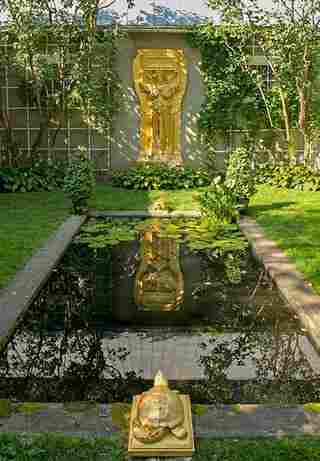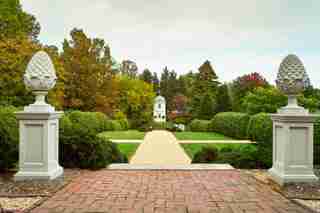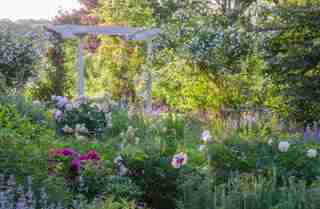September 25,2022
Paradise Saved: Preserving Historic American Gardens
by David Stewart
Spectacular landscape design in the U.S. dates from the 1700s, but much of it fell prey to threats large and small, from war and urban sprawl to economic depression and creeping development. Thanks to conservation groups and generous private owners, a modest number of examples have survived and are open to the public. In Rescuing Eden: Preserving America’s Historic Gardens (The Monacelli Press, $50), design historian Caroline Seebohm tells the story of 28 visit-worthy gardens, including lavish Gilded Age estates, Alcatraz’s prison gardens, and the quirky vision of Pearl Fryar’s South Carolina dreamscape. As different as they are from one another, the gardens are unified by the dedication of their original owners and contemporary conservators to protecting these little slices of paradise.

The great American sculptor Augustus Saint-Gaudens summered in Cornish, New Hampshire, beginning in the mid-1880s. Amid the broad lawns, deep woods, and sculptural hedges, Saint-Gaudens installed statuary from antiquity as well as his own work, such as this gilded-bronze cast of Amor Caritas at one end of an atrium court.

In the center of Annapolis, Maryland, lawyer William Paca bought this two-acre lot in 1763. His Federal mansion and sloping gardens, organized into terraces and parterres, are fittingly grand for the man who went on to become one of the city’s most prominent citizens as a politician and signer of the Declaration of Independence.

The Florence Griswold Museum in Old Lyme, Connecticut, is named after its garden’s designer, the last of her family to live on the property after their fortunes were reversed in the beginning of the 20th century. An American version of British garden designer Gertrude Jekyll, Griswold was fond of massing perennials in informal beds that were riotous with color.
In the garden-friendly climate of the Pacific Northwest, landscape designers Elizabeth Lord and Edith Schryver launched their firm in 1929, going on to create more than 250 designs in the region. Historic Deepwood Estate in Salem, Oregon, is one of their earliest collaborations, and it includes this English teahouse garden.
The contemporary Yew Dell Botanical Gardens in Crestwood, Kentucky, are famous for housing thousands of rare specimen trees and a well-stocked plant nursery, not to mention a genuine castle. The sunken rock garden pictured here was one of the first created by late owner Theodore Klein; it is now used as a test garden for alpine and tropical succulents.
Bishopville, South Carolina, homeowner Pearl Fryar discovered topiary in the early 1980s, and he became obsessed with it almost overnight, eventually shaping more than 500 plants. The garden surrounds his modest brick home, and it consistently features abstract shapes in lieu of animal forms.
Rescuing Eden: Preserving America’s Historic Gardens was published this fall by Monacelli Press.






